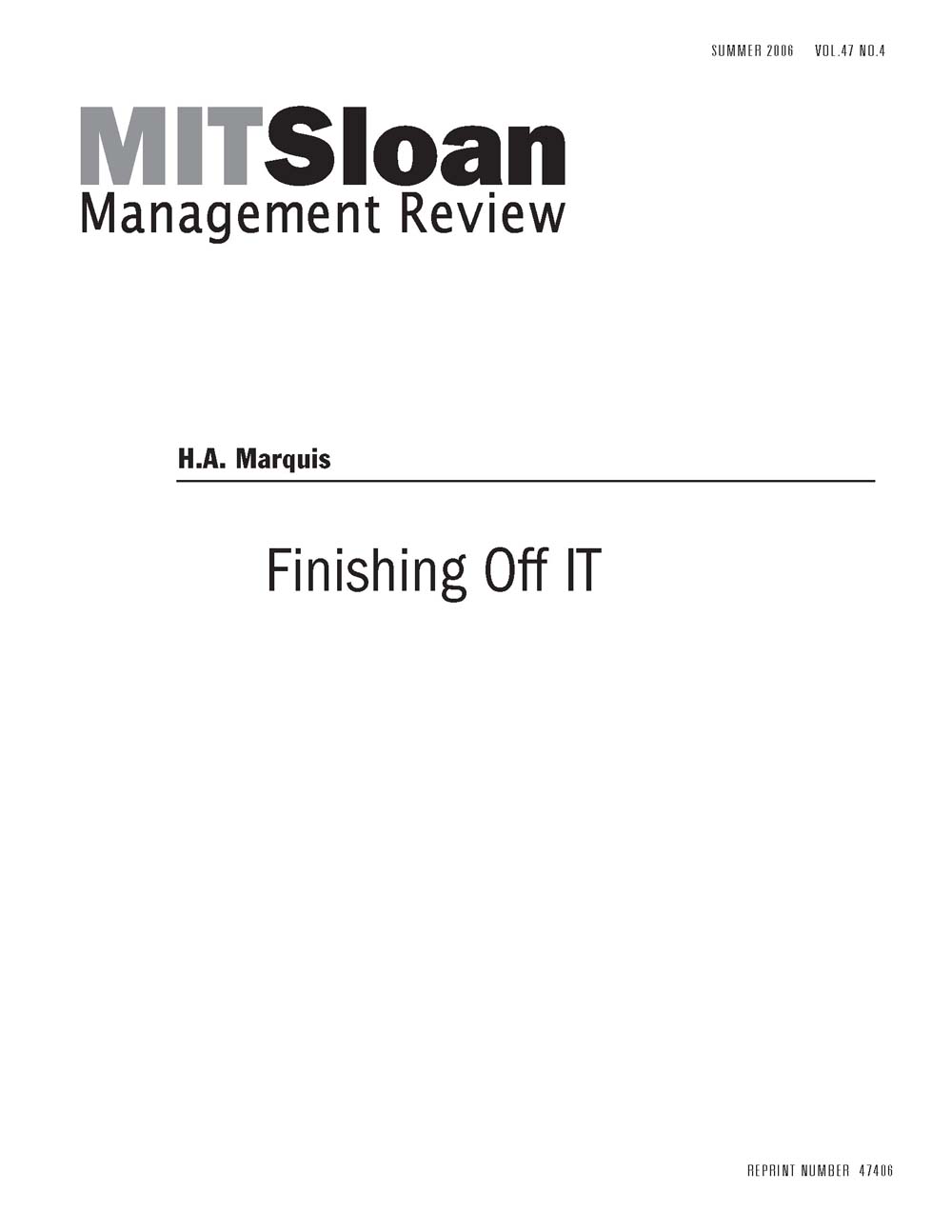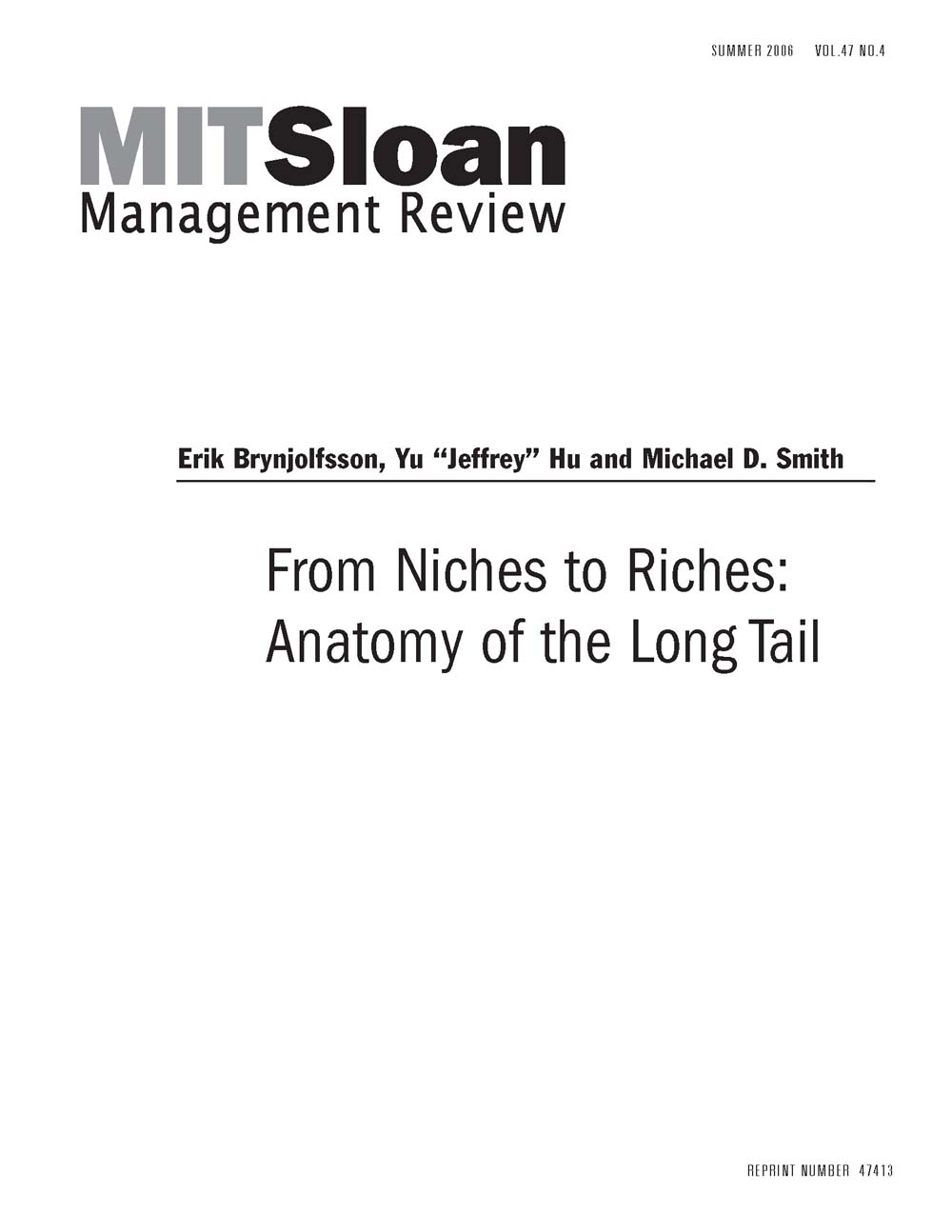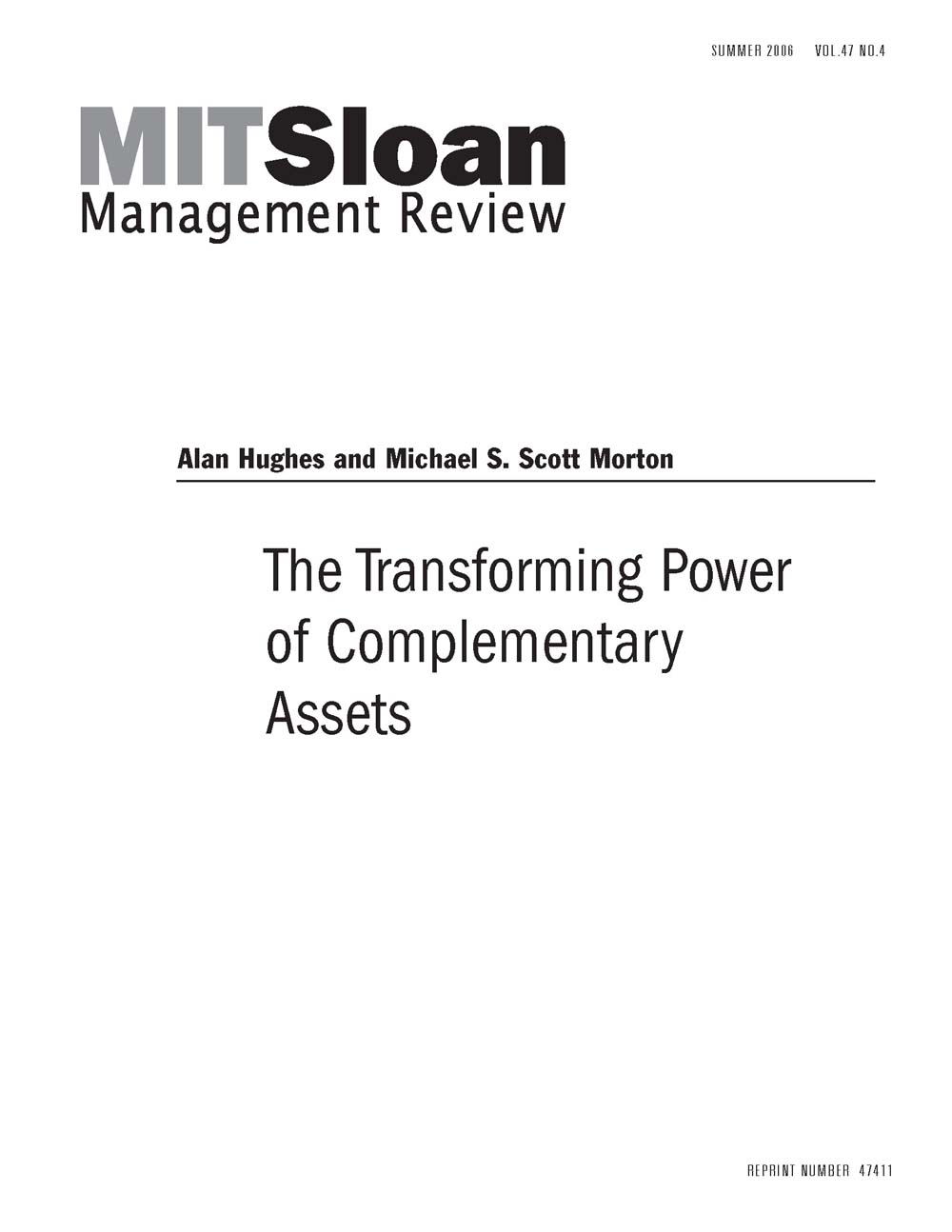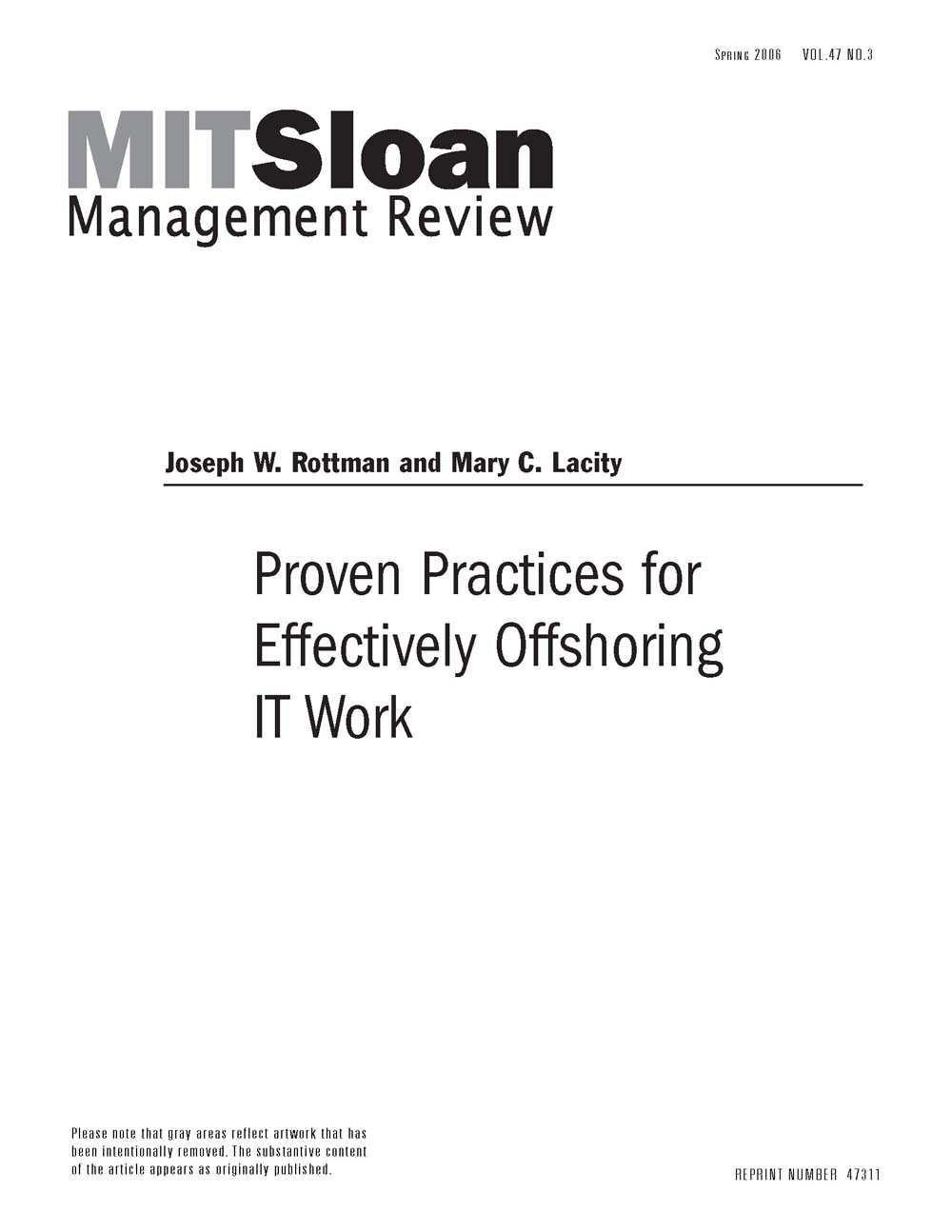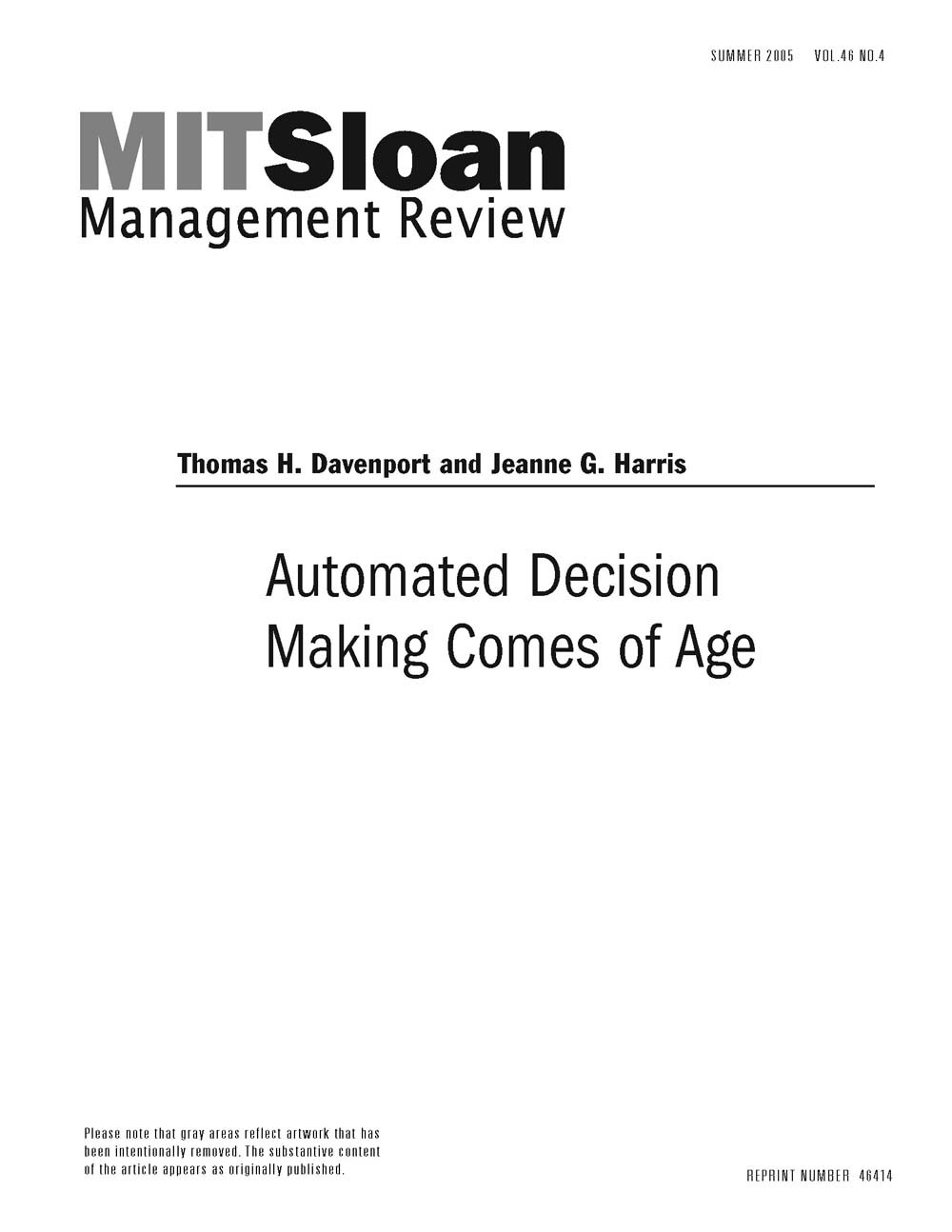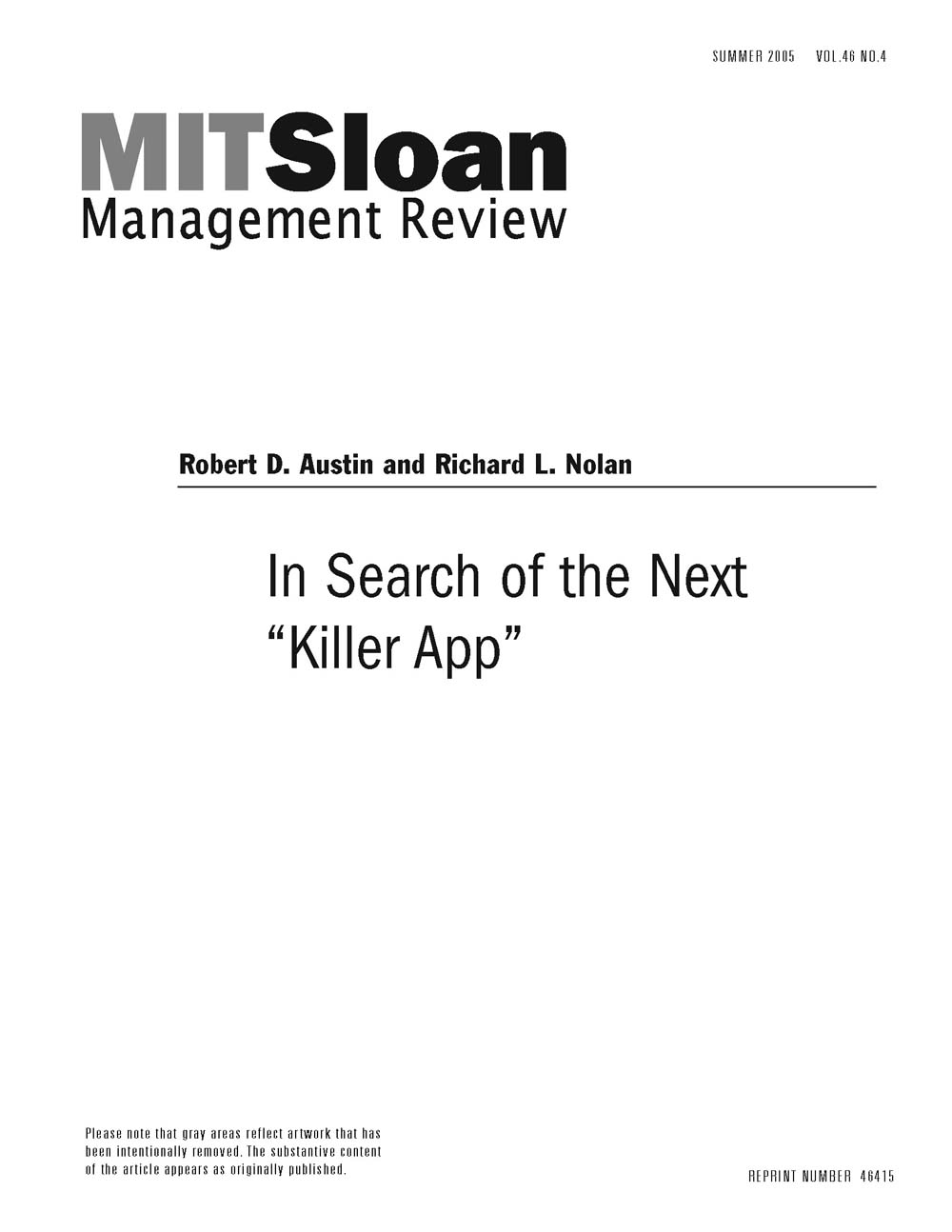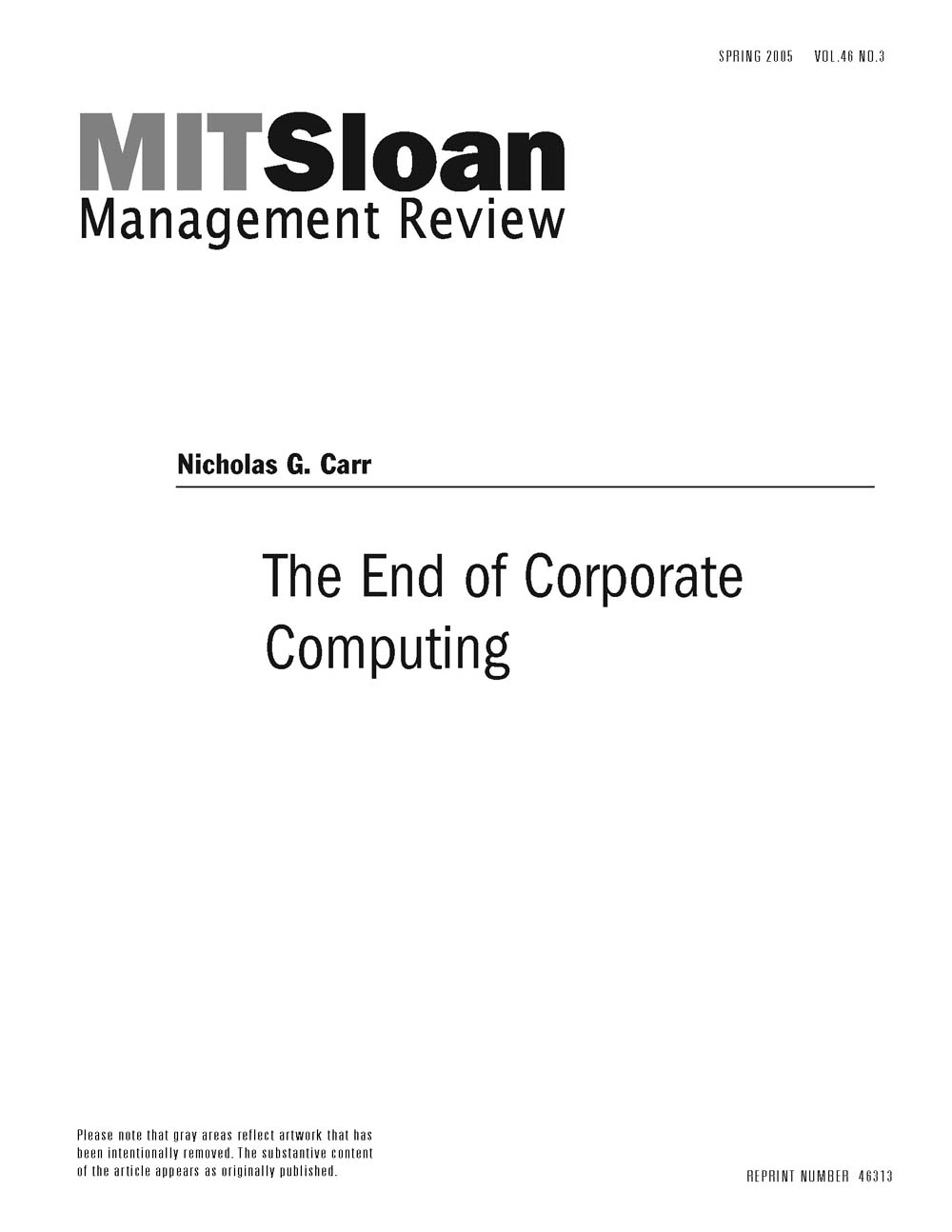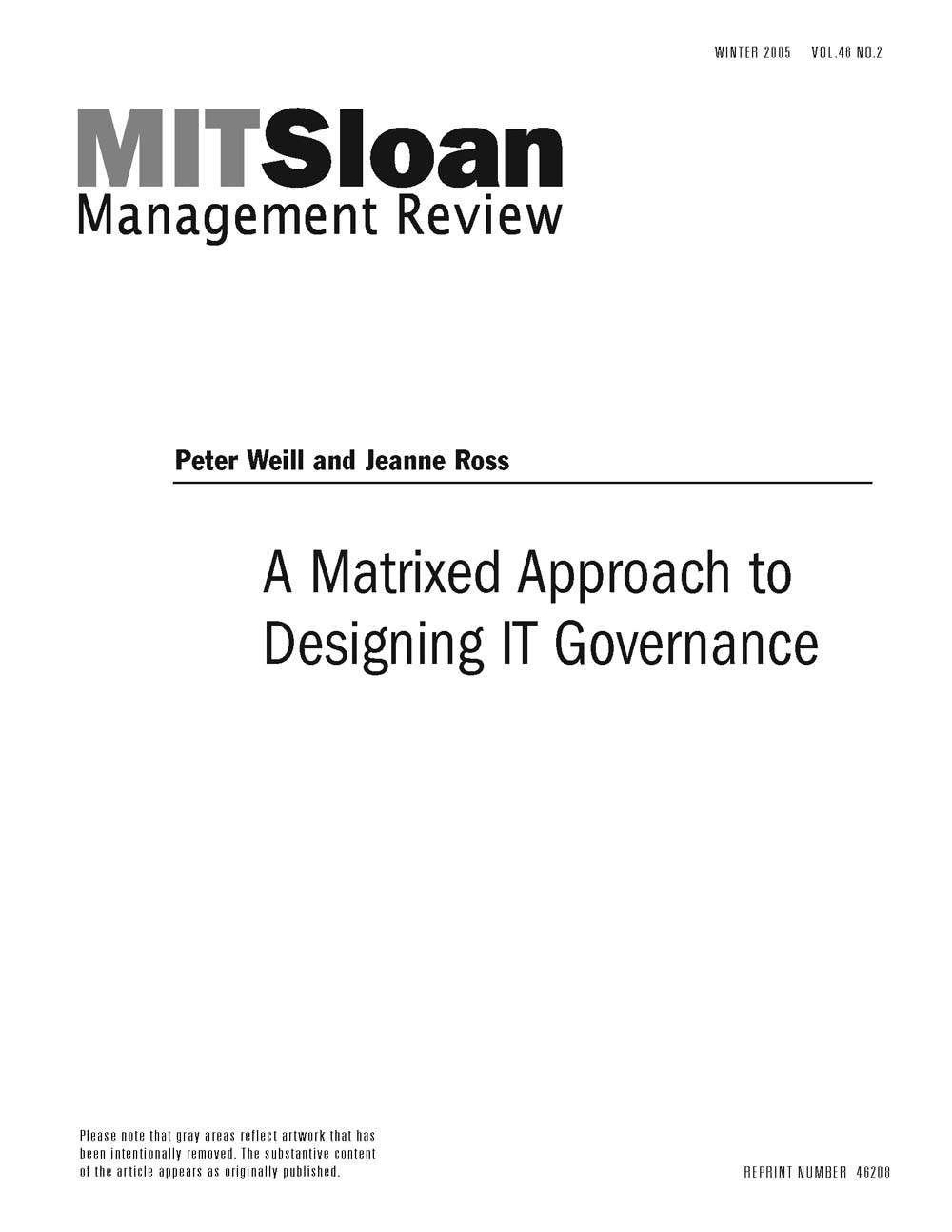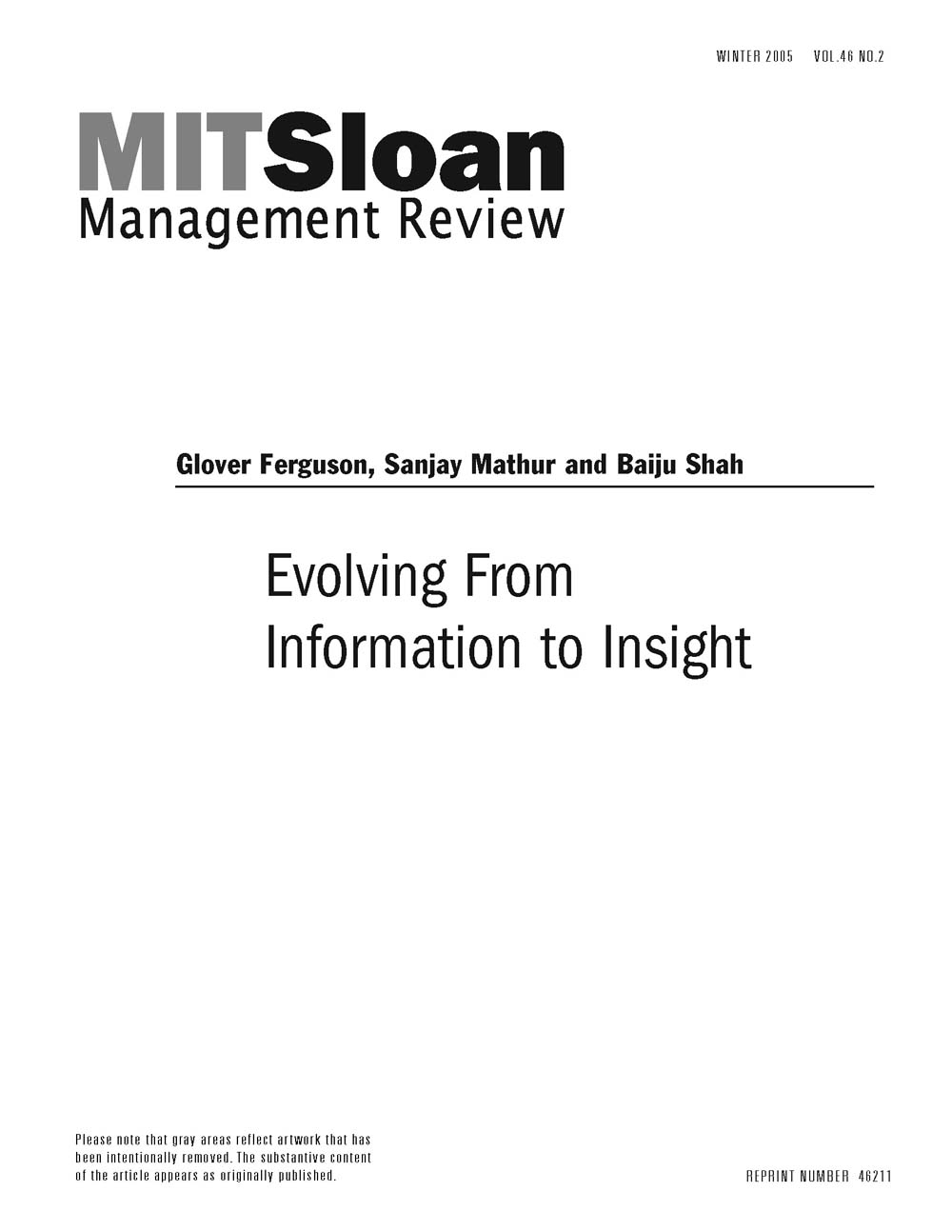The author re-examines the role of IT as a commodity and considers whether IT can still be used to provide strategic advantage. In discussing regulation, outsourcing relationships and corporate dependence on IT, this article further clarifies the argument that IT will soon be handled by larger corporate utilities. While agreeing that most IT functions can be outsourced to utility-style providers, the article suggests that in-house corporate computing can still provide a strategic advantage. By examining failed IT outsourcing relationships, the author identifies key aspects of IT, including auditing and reporting procedures and customer-facing resources that are too important to a firm's success to outsource. The author argues that to better exploit these advantages, managers should embrace the fact that IT is no different than any other corporate function, instead of placing it in its own silo separate from other business practices. Only then will the real commoditization of IT be complete and the long-promised benefits be seen.
Managing Technology P. 5
Page 10 of 15
-
From Niches to Riches: Anatomy of the Long Tail
Dozens of markets of all types are in the early stages of a revolution as the Internet and related technologies vastly expand the variety of products that can be produced, promoted and purchased. Although this revolution is based on a simple set of economic and technological drivers, the authors argue that its implications are far-reaching for managers, consumers and the economy as a whole. This article looks at what has been dubbed the "Long Tail" phenomenon, examining how customers derive value from an important characteristic of Internet markets: the ability of online merchants to help consumers locate, evaluate and purchase a far wider range of products than they can typically buy via the traditional brick-and-mortar channels. The article examines the Long Tail from both the supply side and the demand side and identifies several key drivers. On the supply side, the authors point out how e-tailers' expanded, centralized warehousing allows for more offerings, thus making it possible for them to cater to more varied tastes. On the demand side, tools such as search engines, recommender software and sampling tools are allowing customers to find products outside of their geographic area. The authors also look toward the future to discuss second order amplified effects of Long Tail, including the growth of markets serving smaller niches.
-
The Transforming Power of Complementary Assets
Successful companies recognize that information technology can fundamentally alter the very nature of work. Such a transformation, however, often requires that an organization rethink its corporate strategy and remake its basic structure and processes. The authors, drawing on interviews with Schneider International as part of MIT's Management in the 1990s Research Program, show that the benefits to organizations are related to the extent that organizations adapt their internal structures, processes and culture to extract the greatest value from technology. Although IT has enabled the growth of new companies and even entire industries, these technologies have also transformed the opportunities and challenges facing established manufacturing and service firms. This article examines Schneider's implementation of technologies such as GPS and satellite tracking not only to improve dispatch but also to provide value to customer service such as pinpointing delivery times, driver availability and the ability to alter delivery pickup and drop-off locations. The authors demonstrate that if organizations invest in complementary assets (people skills, new organizational structures and new work processes) to support their IT, they can transform services into products that will evolve into yet more new services, creating a virtual spiral with enormous competitive advantages.
-
Proven Practices for Effectively Offshoring IT Work
Fifteen best practices can accelerate learning and make outsourcing worthwhile.
-
Generating Premium Returns on Your IT Investments
Although IT portfolio management has been a best practice for some time, many companies still generate substandard returns from their IT investments. The authors note that investing the right amounts in the right IT asset classes is only the first step -- IT portfolio management techniques must be complemented by a suite of interlocking business practices and processes collectively labeled "IT savvy." The benefits of establishing such practices add up to a tangible IT savvy premium: The authors point to higher net profits and other performance gains for IT-savvy companies in the year following their investments in key IT asset categories. The article cites a range of organizations -- from 7-Eleven Japan and Amazon.com to Raytheon and Carlson Companies -- in which IT savvy is ingrained, informing many of the companies' business decisions and sharply focusing their IT investments. Starting with a refresher on the IT portfolio approach -- and noting best-practices portfolio players such as UPS, Eli Lilly and Mohegan Sun -- the authors draw on the findings of a multiyear survey to review the different IT assets in which companies invest before discussing the gap in IT investment returns that separates those with IT savvy from those without. They present five hallmarks of IT savvy and offer a series of practical suggestions for how managers can start to match IT savvy with the IT asset mix.
-
Automated Decision Making Comes of Age
Futurists have long anticipated the day when computers would relieve managers and professionals of the need to make certain types of decisions. But for a variety of reasons -- including management skepticism and concerns about solution complexity -- automated decision making has been slow to materialize. Automated decision making is finally coming of age, the authors argue, and the new generation of applications differs substantially from prior decision-support systems. Today's applications are easier to create and manage than earlier systems. Rather than require people to identify the problems or to initiate the analysis, companies typically embed decision-making capabilities in the normal flow of work. Those systems then sense online data, apply codified knowledge or logic, and make decisions -- all with minimal amounts of human intervention. They can help businesses generate decisions that are more consistent than those made by people, and they can help managers move quickly from insight to decision to action. This can help companies reduce labor costs, leverage scarce expertise, improve quality, enforce policies and respond to customers. As automating decisions becomes more feasible, organizations need to think about which decisions have to be made by people and which can be computerized.
-
In Search of the Next "Killer App"
We can no longer envision the future by extrapolating the present.
-
The End of Corporate Computing
Information technology is undergoing an inexorable shift from being an asset that companies own -- in the form of computers, software and myriad related components -- to being a service that they purchase from utility providers. Three technological advances are enabling this change: virtualization, grid computing and Web services. Virtualization erases the differences between proprietary computing platforms, enabling applications designed to run on one operating system to be deployed elsewhere. Grid computing allows large numbers of hardware components, such as servers or disk drives, to effectively act as a single device, pooling their capacity and allocating it automatically to different jobs. Web services standardize the interfaces between applications, turning them into modules that can be assembled and disassembled easily. The resulting industry will likely have three major components. At the center will be the IT utilities themselves -- big companies that will maintain core computing resources in central plants and distribute them to end users. Serving the utilities will be a diverse array of component suppliers -- the makers of computers, storage units, networking gear, operating and utility software, and applications. And finally, large network operators will maintain the ultrahigh-capacity data communication lines needed for the system to work. IT's shift from an in-house capital asset to a centralized utility service will overturn strategic and operating assumptions, alter industrial economics, upset markets and pose daunting challenges to every user and vendor. The history of the commercial application of IT has been characterized by astounding leaps, but nothing that has come before -- not even the introduction of the personal computer or the opening of the Internet -- will match the upheaval that lies just over the horizon.
-
A Matrixed Approach to Designing IT Governance
On the basis of two different studies -- a survey of CIOs at 256 enterprises in the Americas, Europe and the Asia/Pacific region and a set of 40 interview-based case studies at large companies such as Johnson & Johnson, Carlson Companies, UPS, Delta Air Lines and ING DIRECT -- the authors conclude that when senior managers take the time to design, implement and communicate IT governance processes, companies get more value from IT. Toward that end, they offer a single- page framework for designing effective IT: a matrix that juxtaposes the five decision areas (principles, architecture, infrastructure, business-application needs, and prioritization and investment decisions) against six archetypal approaches (business monarchy, IT monarchy, federal, duopoly, feudal and anarchy). The authors illustrate how successful companies use different approaches for different decisions to maximize efficiency and value for both IT and the overall enterprise. They then offer recommendations to guide effective IT governance design.
-
Evolving From Information to Insight
Business leaders often believe their organizations are swamped with business process information, but that information is a relative trickle, say the authors, compared with the wealth of physical-world, biological, public and personal-preference data that is being made accessible by powerful technologies. The sheer quantity of all this information is unprecedented, but so is the complexity of working with it. Yet, despite its volume and disparate nature, this data is potentially useful to business because the computing power necessary to merge, manage and make sense of it also has been advancing and becoming more affordable. On the basis of working sessions with hundreds of global organizations such as Best Buy, the European Aeronautic Defence and Space Co., Ford Motor Co., the Irish government, Payless ShoeSource, UPS and Walgreens, the authors illustrate how forward-looking companies are positioning themselves ahead of this information curve by moving quickly and down two parallel tracks: increasing the company's ability to gather and access new forms of data while simultaneously building organizational capability to use that data for insight.



